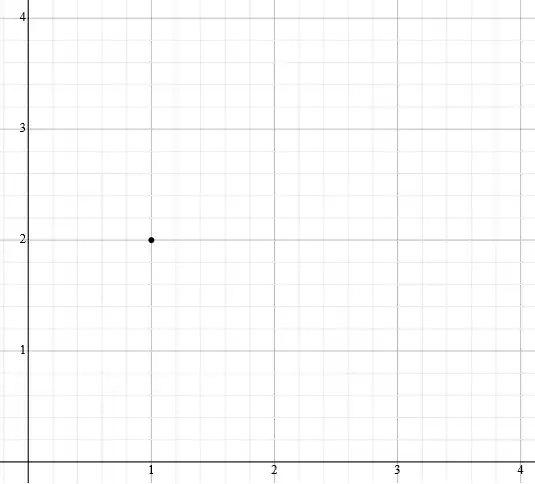If the graph is only a point on the Coordinate plane, for example the graph of function
$f\left(x\right)=\left(x+1\right)$
Where the domain restricted to only {1} as the graph shows
How we can deal with this $\lim _{x\to 1}$?
is it impossible to find this ? or is it equal to 2 ?
